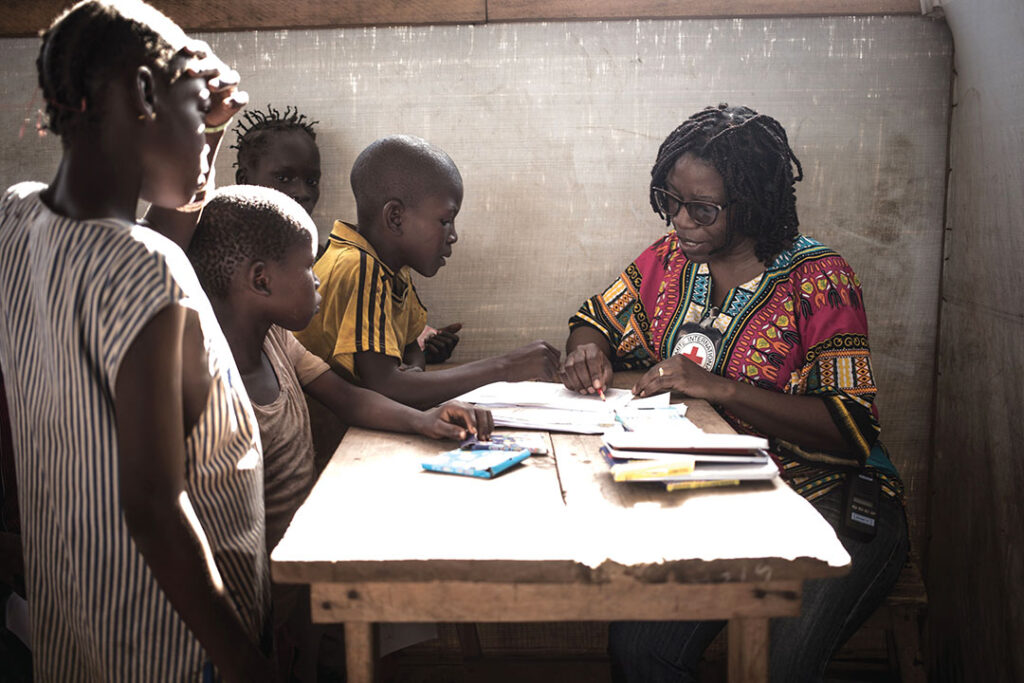AGENCE FRANCE-PRESSE
Children at Lazare camp in war-ravaged Central African Republic draw scenes from daily life. They draw armed men. Armored vehicles. And they use red. Lots of red.
“Their problem is that they suffer daily exposure to violence,” said psychologist Mamie Nouria Meniko.
Nouria Meniko runs a Red Cross program at the displaced people’s camp in Kaga Bandoro to identify and help kids suffering from post-traumatic stress disorder (PTSD).
“Drawing helps children to express what they are feeling. It shows what children cannot say out loud,” Nouria Meniko said. “Sometimes, some of them start crying as soon as they start drawing.”
For five long years, Kaga Bandoro was in the hands of armed groups — militias who control 80% of the troubled country.
Typically claiming to defend specific ethnic groups or religions, the militias fight for resources and carry out extortion and violence.
Many children have seen beatings, rape or murder. Some have seen their homes invaded, their parents humiliated, hurt, abducted or killed.
The Red Cross program has enabled Nouria Meniko to identify 233 children ages 5 to 15 who bear symptoms of PTSD.
To help the children manage their trauma, the psychologist teaches them breathing and relaxation techniques.
Herve, 12, always shows the same things in his drawings: pickup trucks with machine guns mounted on the back. A body in a river. A hand in a well. A house on fire, with his dad inside.
“I have to draw to get the images out of my head and be able to sleep,” he said.
Herve’s mother, widowed in 2013, says the sessions have helped the boy and her relationship with him. “Before, he used to cry all night. This week, he’s only woken up five times.”
The therapy also helps parents understand why a child may be craving attention or behaving aggressively.
“Before, when he didn’t obey me and did something silly, I used to hit him,” Herve’s mother admits. “I didn’t understand. But now I know why he did that, and we talk to each other.”
“We can’t wipe out anything out,” Nouria Meniko said. “What we try to do is to help them live with the trauma.”

